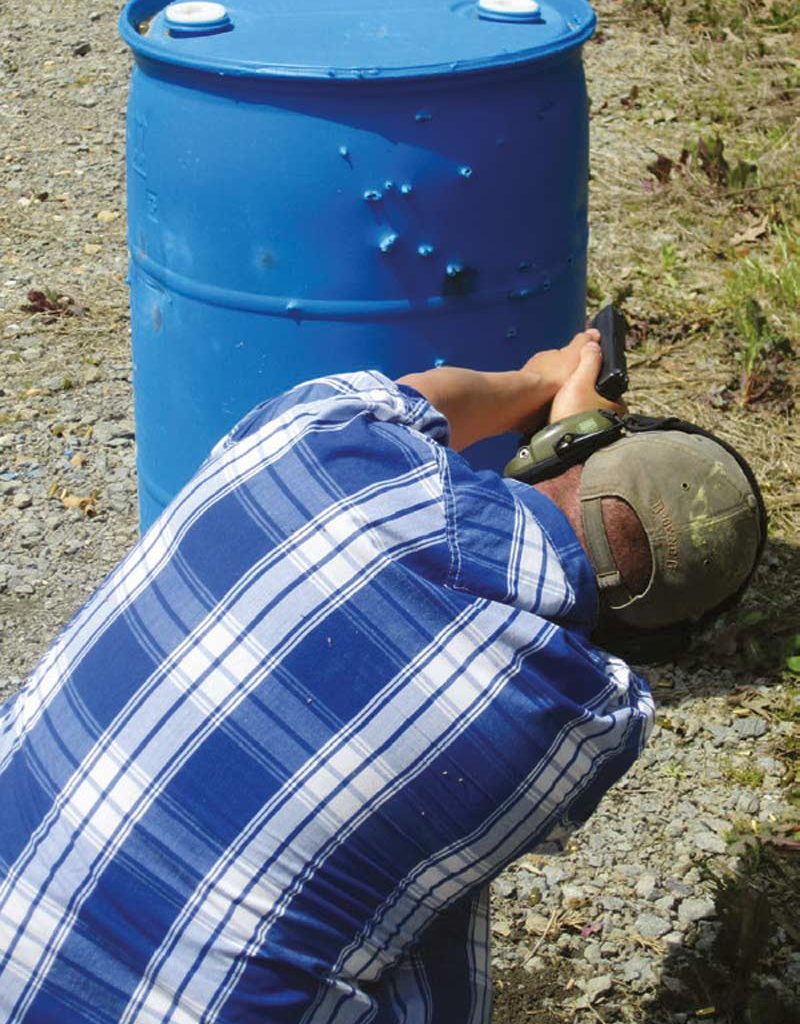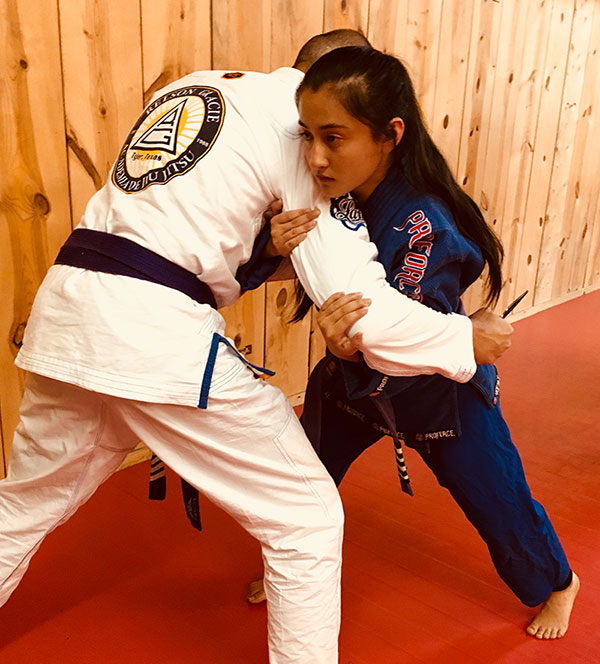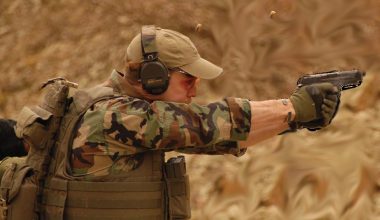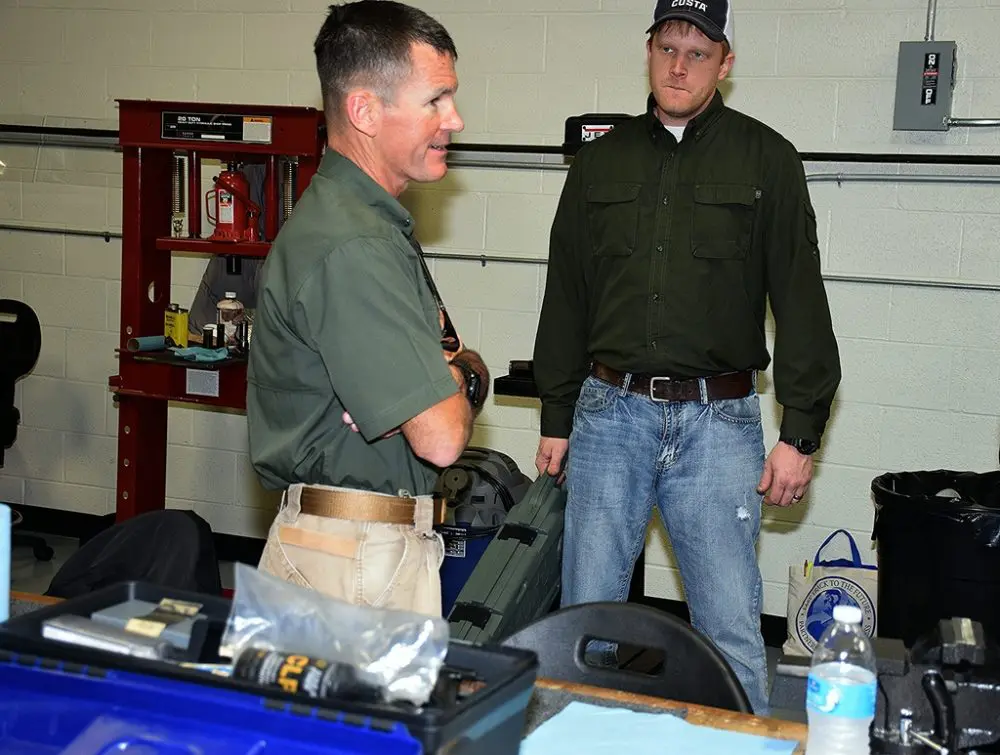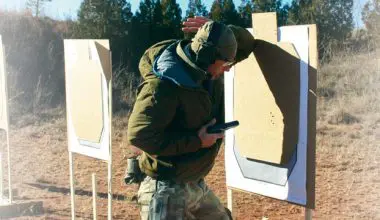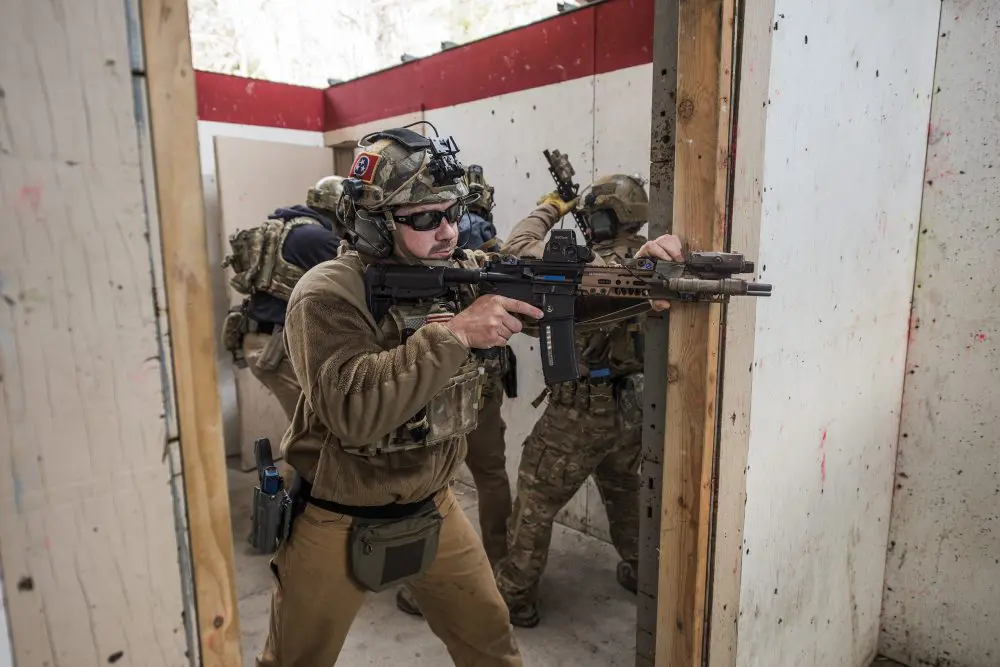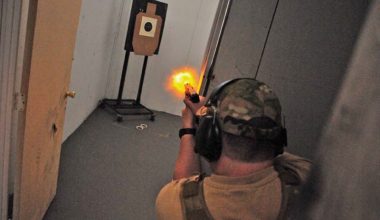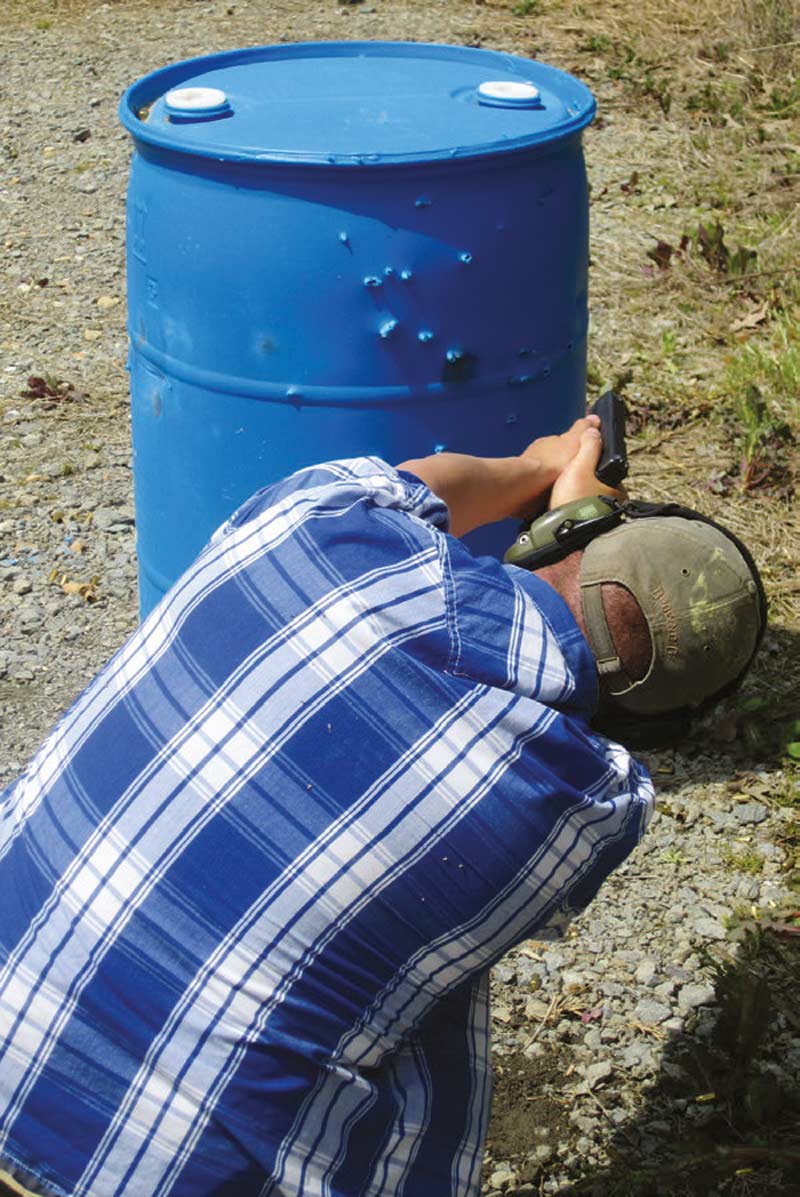
If our goal is to train ourselves to get a specific result, then the training has to be carefully designed to achieve that result. In order for the program to work as designed, we have to execute it correctly. It isn’t just about drill repetitions. It’s about correct drill repetitions. I often hear it said that “Practice does not make perfect. Only perfect practice makes perfect.”
That is the core of the Shooting Performance curriculum, learning how to implement a training program and practice correctly so that skill development continues beyond the confines of a two-day course.
Last year I had the opportunity to take Mike Seeklander’s Shooting Performance Defensive Handgun Training Program Level 1 course at Last Resort Firearms Training in White Hall, Arkansas. There were 15 in the class, a mix of private citizens and law enforcement. Because of the size of the class, Mike had brought in one of his adjunct instructors, Steve Aryan, to ensure that the instructor-to-student ratio remained at an acceptable level and each student received adequate attention to help identify and correct problem areas.
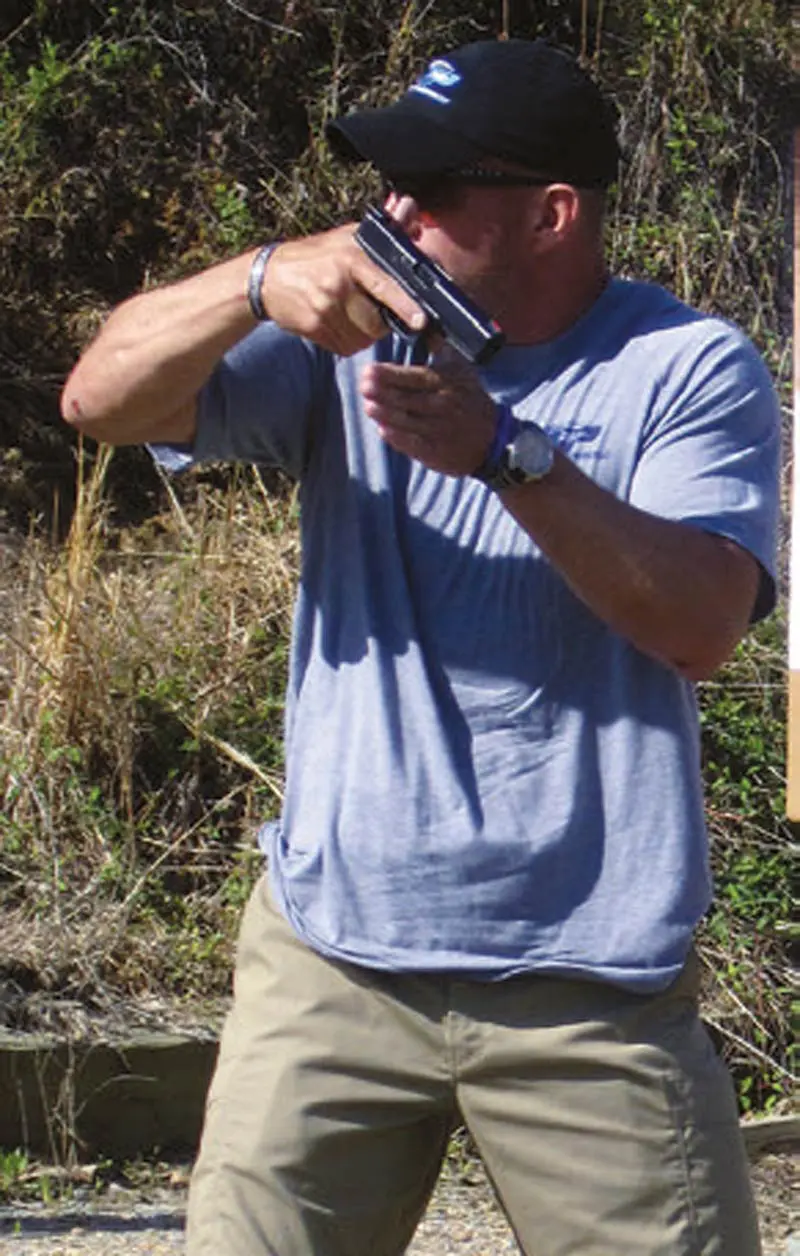
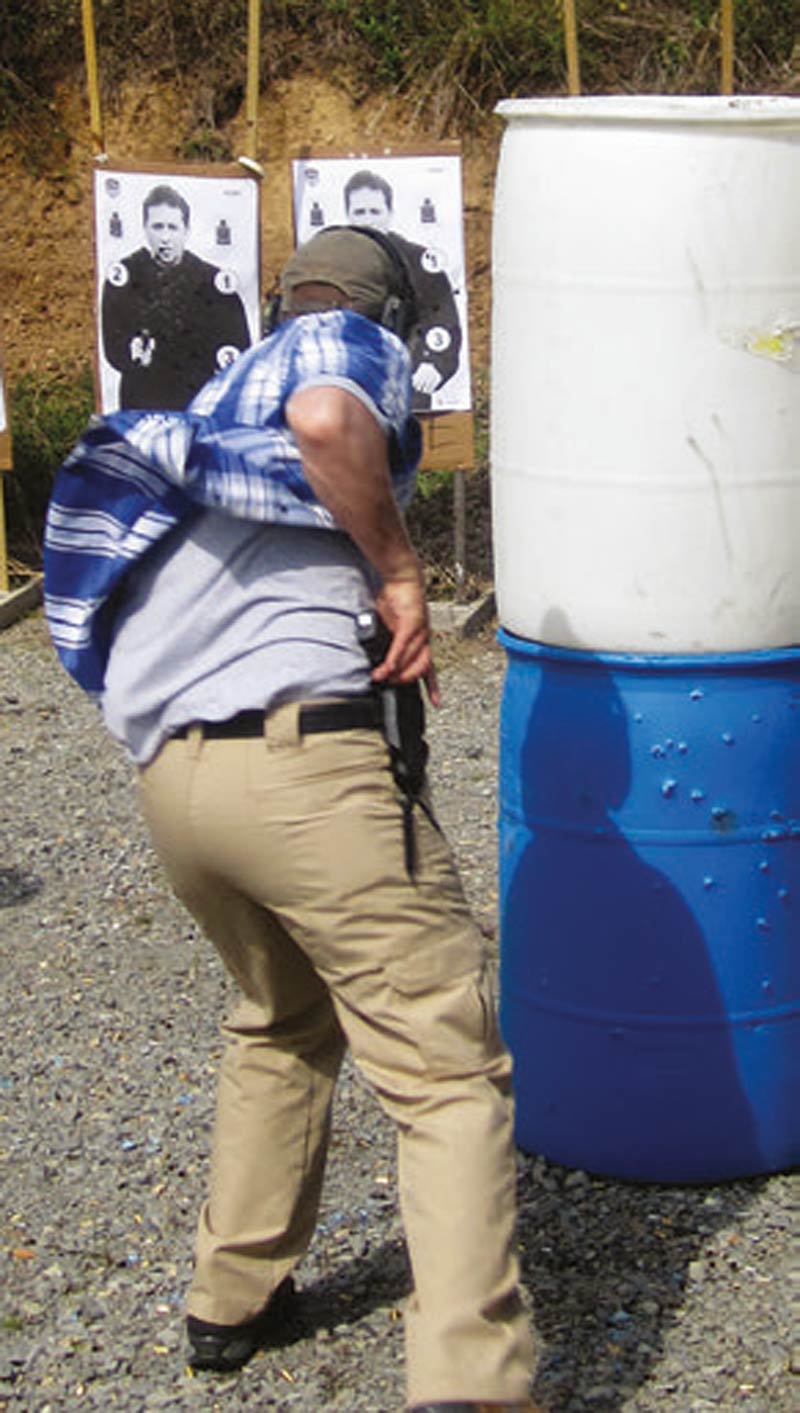
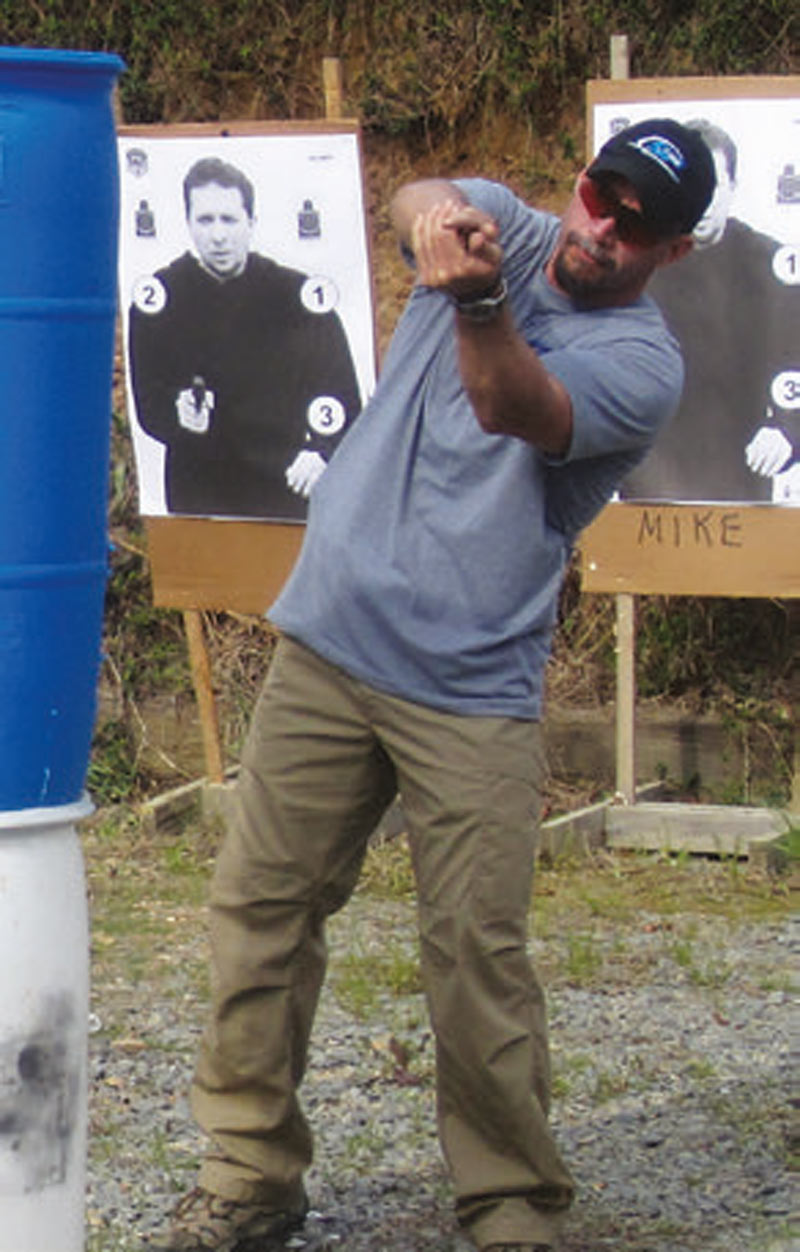
Table of Contents
FEDERAL AIR MARSHAL TRAINING
Mike has been in some unique positions in his firearms instructing career, which allows him to bring a very developed perspective on defensive shooting to the table. Immediately after September 11, 2001, Mike was the lead firearms instructor for the Federal Air Marshal Service (FAMS). Because of the demand for Air Marshals following 9/11, the full-time instructor cadre for FAMS was supplemented with additional instructors pulled from the field.
Every three weeks, a new batch of instructors would be rotated in. Many of these instructors had extensive Special Forces, SWAT or federal law enforcement experience. Some of the most experienced firearms instructors who could be sourced were rotated in and out of this accelerated training program.
As the lead instructor, Mike Seeklander had the opportunity to debrief all these instructors and get feedback on the program: what worked, what didn’t, and where improvements needed to be made. Mike was able to draw from this vast cumulative experience and, because of the political climate at the time, make expedited wholesale changes to the training program.
Mike takes that program development experience working with FAMS, his understanding of adult learning principles, and his personal experience developing a very high level of performance and applies it all to what he teaches now. So not only do his students get the benefit of Mike Seeklander’s take on defensive shooting and skill improvement, but by extension the benefit of the experience of all the instructors Mike has worked closely with.
TRAINING DAY ONE
Training Day One kicked off with the usual introductions, safety briefing, necessary paperwork, and a short discussion of gear selection and placement. The first drills were dry fire to demonstrate the number of manipulations that can be practiced and improved without firing a single round of ammunition.
Mike understands the need for repeated correct execution of a technique in order to “hardwire” it in place. He made it very clear that executing a drill correctly is more important than executing a drill quickly. A bad repetition is a negative repetition and creates inefficiency in the learning process, which cannot be afforded. If short cuts are not taken, anything that relates to manipulating the firearm (e.g., the draw process) can be improved with dry-fire practice if the drills are executed correctly with nothing other than time invested to make the improvement.
The draw process, reloads, and malfunctions were covered during the three hours of dry fire on TD1, with emphasis placed on the draw process. Drawing from concealment can be wrought with performance hazards: not getting the cover garment clear, not establishing a good grip, and moving the gun on an inefficient path to the final shooting position, to name a few.
After Mike was satisfied with how everyone was performing, we broke for lunch and started live fire immediately thereafter.
RECOIL MANAGEMENT
One skill that cannot be taught in dry fire is solid recoil management. A good grip, locking the tendons in the wrist and elbows but not “locking out” or hyper- extending the elbows are all important parts of recoil management.
Mike refers to it as the high performance grip, and it is slightly different than other grip techniques in that he stresses putting pressure on the backstrap of the grip with both the shooting and support hands to control recoil as opposed to the sides. Techniques that emphasize applying pressure to the sides of the grip rely on the friction between the palm of the hand and the grip surface to control recoil, whereas the technique Mike prefers uses more leverage to control recoil. The grip, in combination with locking down the wrist and elbows, can offer very good recoil management.
The goal is to have the front sight consistently track straight up and snap back down into the notch of the rear sight as quickly as possible. Building on this, Mike transitioned into a discussion of sight alignment at speed and the continuum of sight alignment that exists based on target size and distance.
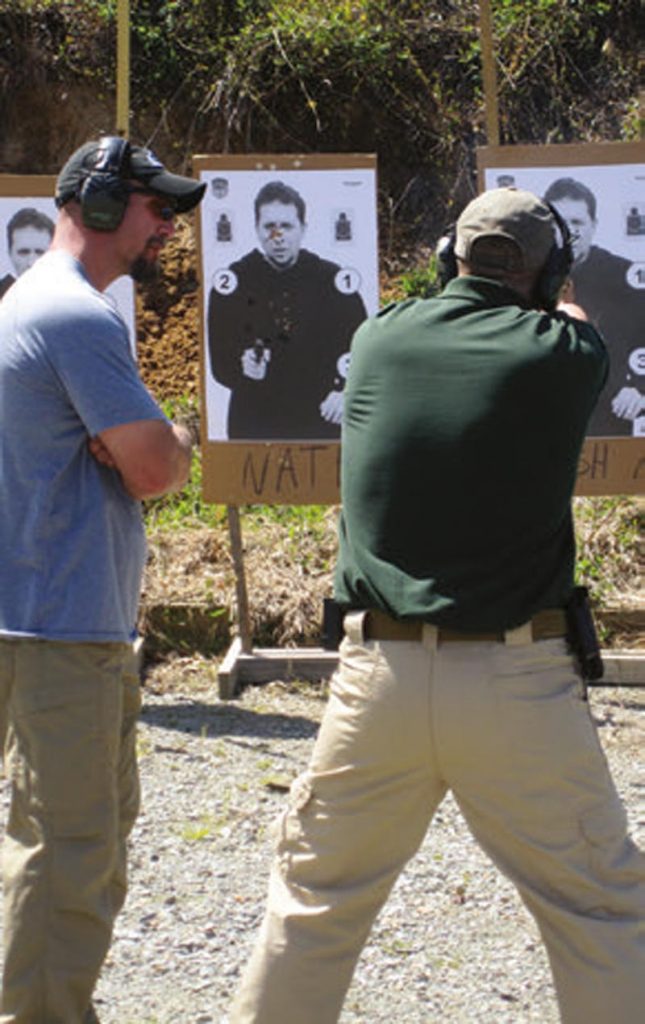
SIGHT ALIGNMENT
The sights dictate how fast we can shoot. If the sights, or whatever we are using as a visual reference, are not indicating that we will get a hit on target, then we cannot press the trigger.
While Mike does not get wrapped up in the sighted fire vs. point shooting debate, he does suggest to always use the sights when training and practicing. This helps build a proper index of the handgun verified by use of the sights that can, after time, be replicated without use of sights. Another way I have heard it put is that point shooting cannot evolve into good sighted fire, but sighted fire can devolve to good point shooting because the body is so accustomed to properly aligning the gun on the intended target.
TRIGGER CONTROL
Much the same way that Mike teaches sight alignment along a continuum based on need, he also applies the concept to trigger control. He teaches two different ways to manipulate the trigger. One is what he refers to as an accelerated press, which strokes through the trigger press in a single quick continuous motion.
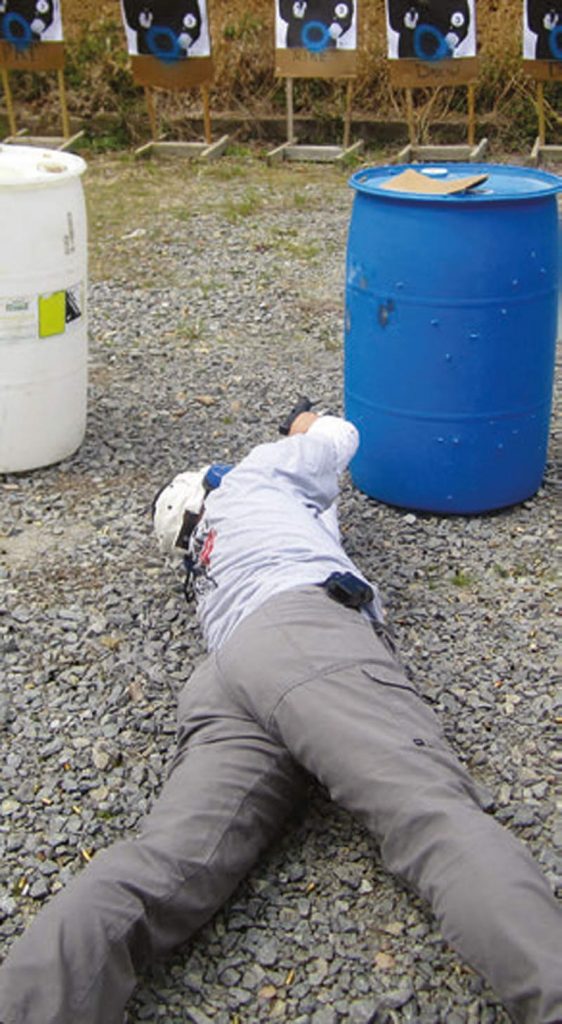
The other is the “prep and press,” where the slack is removed and there is a more deliberate manipulation of the trigger until the shot breaks. He refers to these two trigger press techniques as opposite ends of the continuum, with an infinite number of degrees in between.
At close ranges, the accelerated press would be used because the need for precise trigger control is not as critical. At longer ranges or on small targets, the more purposeful prep and press technique would be used to ensure the sights are not disturbed during trigger manipulation.
Where a particular person needs to transition through that continuum from the accelerated press to the prep and press is dependent upon how well the person grips the handgun. A good grip will moderate some trigger control issues and allow the accelerated press technique to be used to solve more difficult shooting problems.
The majority of the first day was spent working the fundamentals of draw, grip, trigger control and reloads. While it may seem simple, the pace of the class is actually very fast, and the drills are designed and sequenced to ensure everyone stays interested.
The skill level in the class ranged from novice with no prior formal training to IDPA master class shooters, and Mike did an exceptional job pushing everyone to perform better without leaving anyone behind. Prudent but not overuse of a PACT timer and a varied set of live-fire drills to work specific skill areas worked well to first build all the separate parts, then meld them as the day drew to a close.
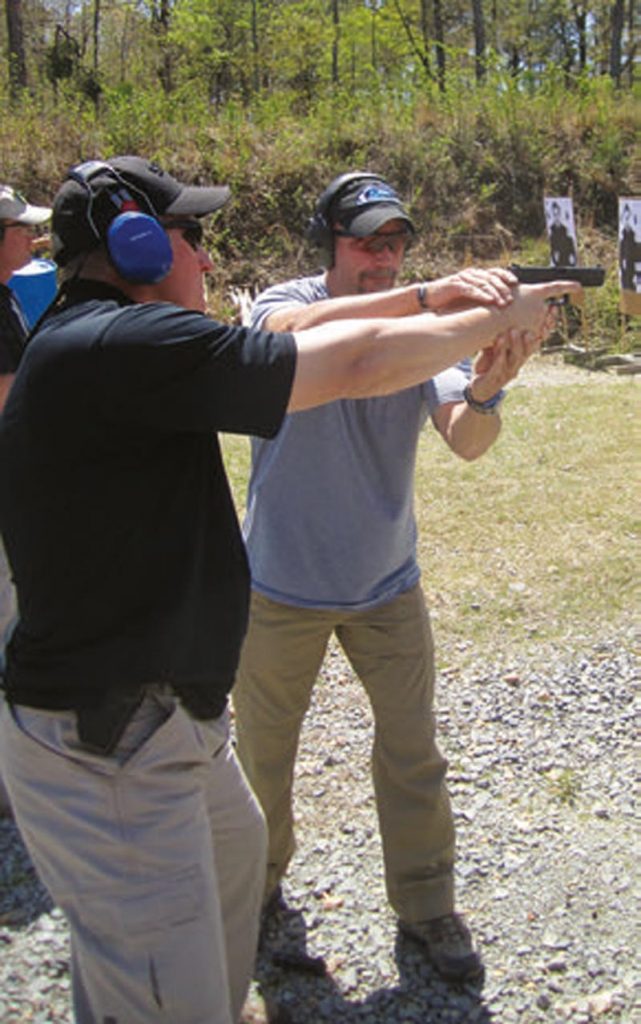
COMPETITIVE SHOOTING
Anyone who is familiar with Mike Seeklander knows that he is a USPSA Grand Master and the 2011 Steel Challenge Production Division World Champion. Competition shooting is a big part of what Mike does and, even though he does an excellent job of switching gears from competition mode to defensive mode, he likes to sprinkle a little competitive spirit into the class by running simple heads-up competitions from time to time.
Generally this involved two shooters facing off against each other. Whoever got the first hit inside the eight-inch circle on the target won. These little competitions served two purposes: they broke up the instructional blocks and tested the skills just learned with a little stress mixed in. Not to mention, they were also fun.
On the line for the winner was a Shooting Performance hat, the coveted “grand master of the day” title, and bragging rights. It may not sound like much, but it was enough. Flubbed draws, reloads, and missed shots by guys who typically could execute very well were not uncommon.
Once everyone had cycled through a few times on each competition, Mike would step up to the line and participate to push everyone just a little bit harder. While I do not think anyone actually beat Mike, it was one of the most enjoyable challenges of the course. Getting to shoot against a nationally successful competitor is not an everyday occurrence for most people. Kind of like playing basketball with Michael Jordan or golf with Tiger Woods—I would never win but it would be fun trying.
TRAINING DAY TWO
If TD1 can be termed the day of fundamentals, TD2 was the day of disadvantaged shooting positions. That is what Mike Seeklander calls shooting around cover or any other circumstances that prevent us from assuming an ideal or near-ideal shooting position, to include shooting with one hand.
The day started with a quick review of TD1, then we jumped into working pivots and off-line movement. Once the class demonstrated we could all pivot and move safely, drills evolved into movement-to-cover drills.
In day-to-day life, how often are we standing behind a suitable piece of cover? Not very often. Most of the time, cover will be at least a few steps away. Mike stressed to always be aware of potential cover because, more often than not, there won’t be much (or any) advance warning before trouble breaks. It will just be upon us and we will or won’t be ready.
The problem with shooting from behind something while trying to keep as much of our body behind it as possible is that it causes us to do weird things with our stance or how we grip the gun. This typically will negatively affect our ability to shoot well.
Mike’s answer to this is to maintain the grip and triangulation of the arms that contribute to good control of the gun, and roll the upper body left or right out from behind cover. The rolling part is what makes this work so well.
To illustrate the effectiveness of the technique, Mike placed two students on opposite sides of a piece of cover and had them take turns practicing the technique on each other with finger guns. If the student executed the technique correctly, the bad guy could only see a small portion of the hands and the eye behind the gun, or in this case, finger. The same technique is applied regardless of position or which side of cover is being used, and regardless of shooting position.
In class, we made use of cover from standing, kneeling and prone positions. The technique worked exceptionally well in all three positions, with very little negative effect on shooting performance because essentially the stance of the upper body, which is what controls the gun, is always maintained.
IMPROVEMENT DRILLS
The last live-fire exercise of the class was evidence of the end goal of not just creating better shooters over two days, but creating shooters who understand the concepts taught and can self-teach once the foundation has been laid.
Each shooter had to name a specific weak area that had been identified during the course and create an actionable plan to improve that weakness and implement that plan under the watchful eyes of Mike and his adjunct, Steve.
The firing line was declared open for the last 90 minutes of class so that shooters could practice however they saw fit to address their acknowledged weakness. This was an opportunity for everyone to apply what had been taught on technique and how to practice on our own while an instructor was still present.
We had to decide what drills to use and then successfully execute them in order to make improvement. Mike and Steve walked the line and occasionally asked questions or offered input to ensure students were indeed practicing correctly, but that was the extent of their involvement.
This was in essence the culmination of the two-day course and a test of applying the more abstract concepts of knowing how to train ourselves moving forward.
JUST THE BEGINNING
What really sets Mike Seeklander’s defensive handgun course apart, other than the quality of instruction, is that it isn’t just a two-day course where students build skills and then are left to go their own way and figure out how to continue improving. The Level 1 course is just the beginning, almost like an introduction to the rest of the training program.
To supplement the course, a book entitled Your Defensive Handgun Training Program walks through the process of how to correctly design and execute a personal training program. Students are given the option of following the prebuilt program included with the book. A DVD set also covers skill drills and how to practice them correctly.
The Defensive Handgun Level 1 course and the other individual pieces of the program have incredible value on their own, but combining them into a total package increases the value beyond the sum of the individual parts.
Only so much can be absorbed in a two-day class or from a book or a series of DVDs. Having a solid foundation and continued skill development following the building of that foundation are what really lead to the greatest performance gains.
Mike Seeklander has designed his courses and accompanying materials to give serious students every tool they need to build their own fortress of skill on the foundation the Level 1 course provides.
